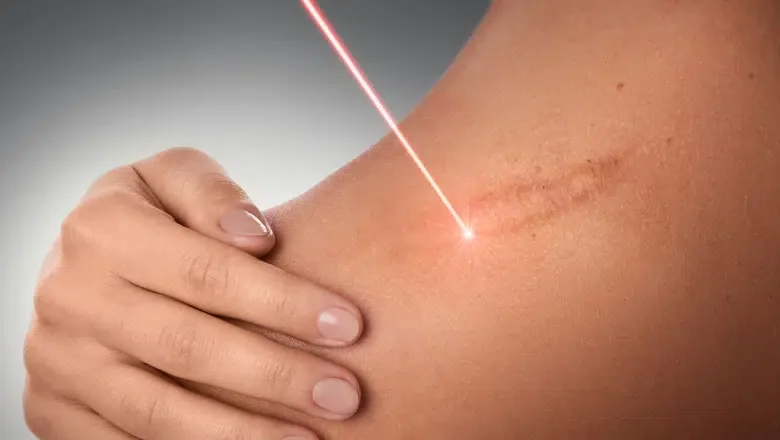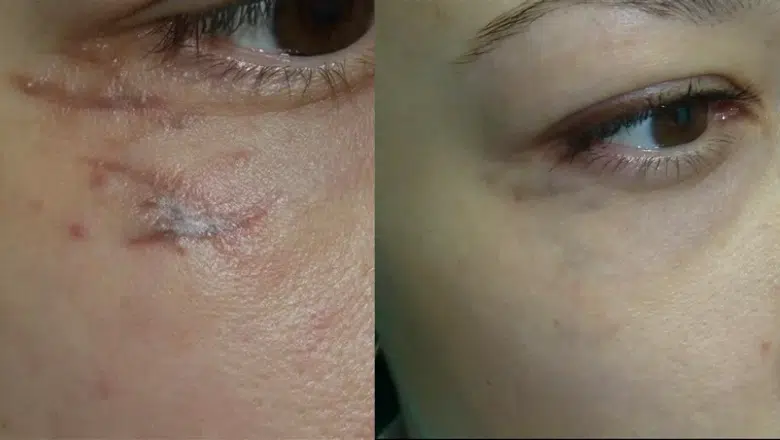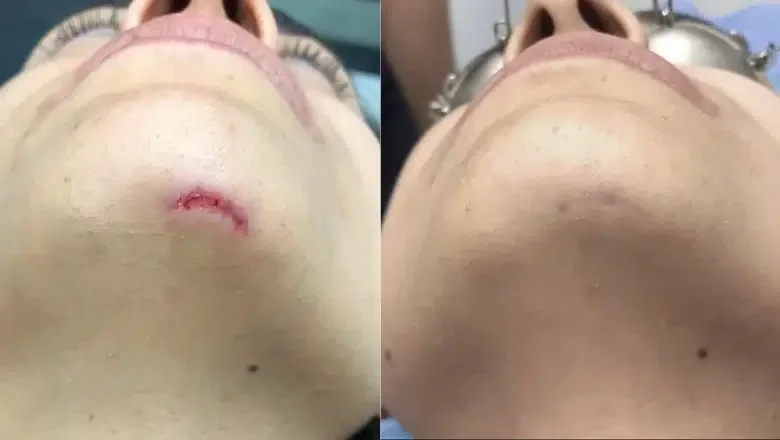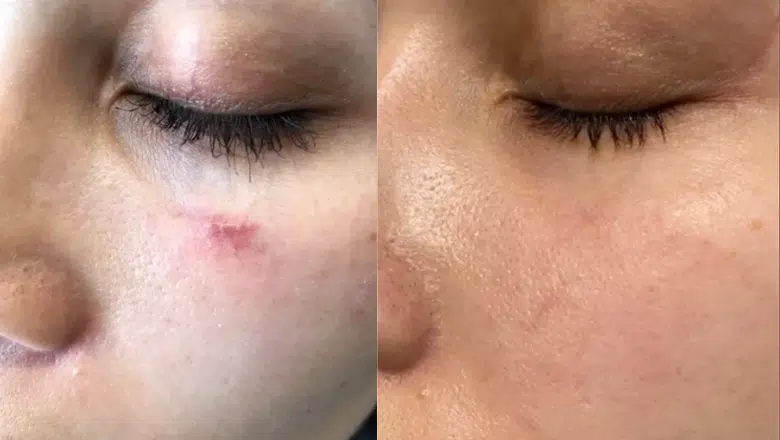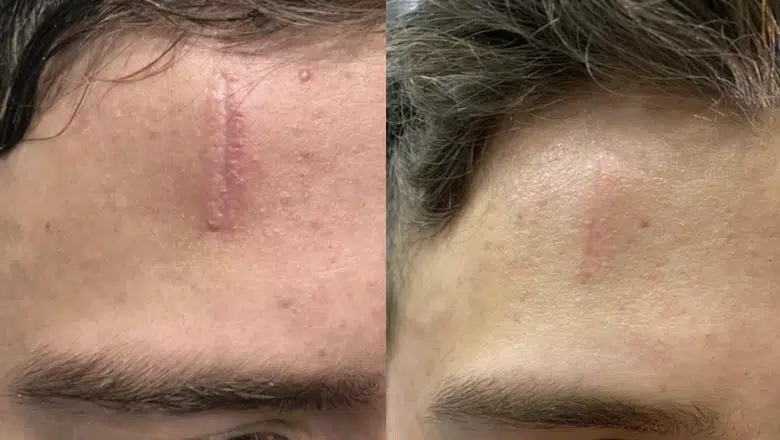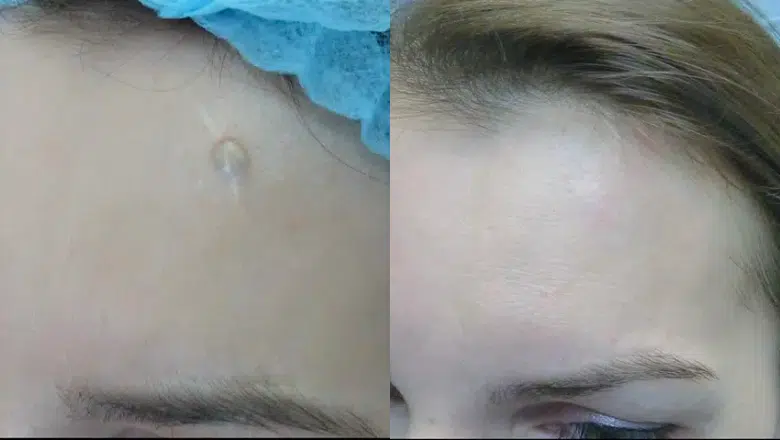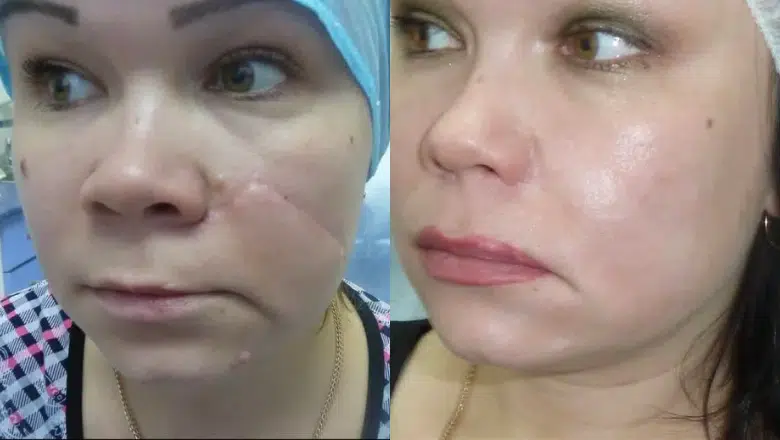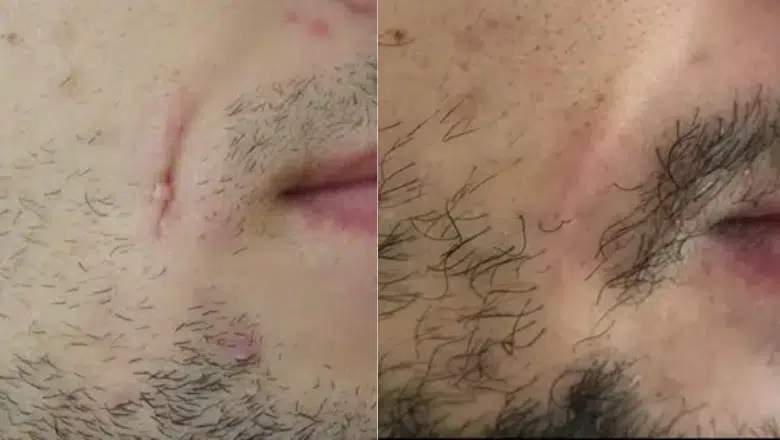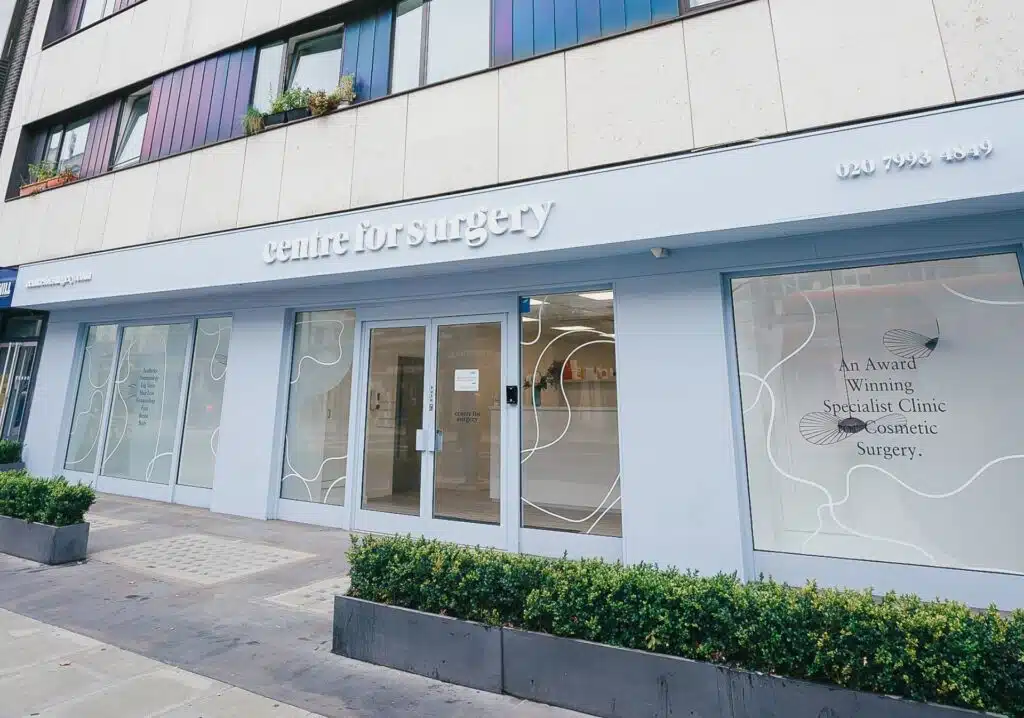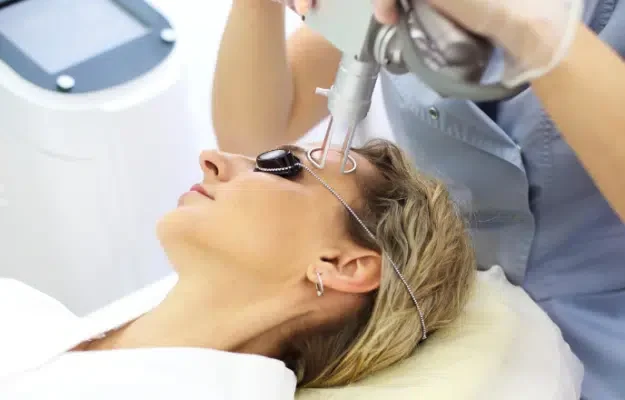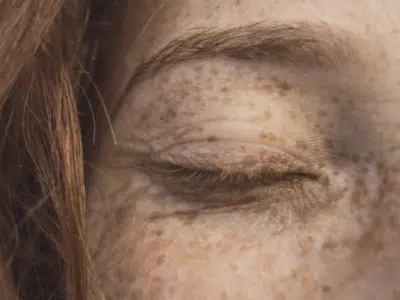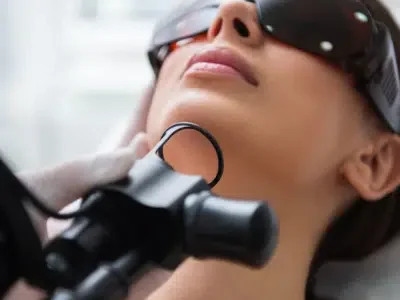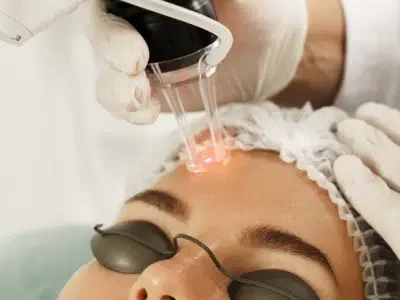Laser Scar Removal in London
Scars are a widespread occurrence that can form on any part of the body throughout a person’s life. The reasons behind the formation of scars and their specific characteristics can differ greatly among individuals. These scars often become a source of cosmetic concern, and in some instances, they might also affect the functionality of the affected area.
The appearance of scars can vary significantly. Some scars are more prominent and harder to conceal with temporary measures like cosmetics. As a result, many individuals look for more permanent and impactful solutions to address these concerns.
RELATED: How to Reduce and Fade Away Scars: Your Treatment Options
What is Laser Scar Removal?
Laser scar removal is a sophisticated cosmetic procedure aimed at reducing the visibility of scars on the skin. This technique involves the use of laser technology to target scar tissue and enhance the appearance of the skin. Here’s a closer look at how it works:
- Technology Behind Laser Scar Removal: The procedure employs specialised Fotona laser devices that emit concentrated light beams. These beams are precisely directed at the scar tissue.
- Treatment Process: The laser light works by removing or reducing the outer layers of the skin over the scar. In some cases, it can also target deeper layers of skin to promote the regeneration of healthier skin cells. The process encourages new, healthy skin to grow in place of the scarred tissue.
- Types of Scars Treated: Laser scar removal is effective on various types of scars, such as acne scars, surgical scars, injury scars, and even certain types of keloid or hypertrophic scars. The effectiveness can depend on the nature and severity of the scarring.
-
Advantages:
- Precision: Lasers can target specific areas without affecting the surrounding skin.
- Reduced Discomfort: The procedure is generally less invasive and painful compared to other scar removal methods.
- Quick Recovery: Recovery times are typically shorter compared to surgical scar removal methods.
- Improved Skin Texture and Appearance: Laser treatment can improve the texture and overall appearance of the scar and surrounding skin.
- Customisation: Treatments are often customised based on the type and extent of scarring. Different types of lasers (like ablative and non-ablative) are chosen to suit individual cases.
Scar Removal with Laser Before & After Photos
Diverse Scar Types and Effective Laser Scar Treatment Options
Am I Suitable for Laser Scar Treatments?
Laser scar removal is a highly effective procedure for those looking to improve the appearance of their scars. However, determining the right candidates for this treatment involves a careful assessment of their overall health and specific skin conditions. Here’s a detailed view of who makes a good candidate for laser scar treatments:
- General Health Considerations: Ideal candidates for laser scar treatments are generally in good health. This means they do not have underlying health conditions that might affect the healing process or increase the risk of complications during or after the treatment.
- Managing Active Acne: For individuals seeking treatment for acne scars, it is crucial to have most of the active acne under control. Treating scars while still actively battling acne can be counterproductive, as new acne can lead to additional scarring. Consulting with a medical professional at Centre for Surgery is essential to determine if your skin is in a suitable state for scar treatments. This step ensures that the treatment is not only effective but also safe.
- Initial Consultation and Patch Test: Your journey to laser scar removal begins with an initial consultation at our Baker Street clinic. During this consultation, a patch test will be performed. This test is a critical step in assessing your skin’s reaction to the laser treatment, helping to identify any potential risks or adverse reactions.
- Creating a Personalised Treatment Plan: Based on the outcomes of your consultation and patch test, a bespoke laser treatment plan will be developed. This plan is tailored to your unique needs, taking into consideration factors such as the type, severity, and location of your scars, as well as your skin type and overall health profile.
- Importance of Expert Guidance: Our knowledge and experience are vital in making informed decisions about your suitability for laser scar treatment and in designing a treatment plan that maximises safety and effectiveness.
Laser Scar Removal Procedure
Laser scar removal, particularly with the advanced Fotona SP Dynamis system, represents a significant leap in dermatological treatments, offering a dual-wavelength approach to effectively reduce and improve the appearance of scars. Here’s a deeper look into how this innovative technology works:
Dual-Wavelength Approach
The Fotona laser uniquely combines two laser wavelengths – the non-ablative Nd:YAG and the fractional-ablative Er:YAG. This dual approach enables a comprehensive treatment that addresses both the surface and deeper layers of the skin, ensuring dramatic improvement in the appearance of scars.
Er:YAG Laser and VSP Technology
The Erbium-YAG (Er:YAG) laser is a cornerstone of the Fotona system, utilising advanced Variable Square Pulse (VSP) technology. VSP technology allows for precise control over the laser, enabling it to switch between cold ablative and non-ablative thermal methods. This versatility means treatments can be finely adjusted to match the specific needs of each patient. The Er:YAG laser works primarily on the skin’s top layer, carefully vaporising scar tissue with minimal impact on the surrounding healthy skin. This targeted approach ensures the precise removal of scarred tissue while preserving the integrity of the surrounding skin.
Nd:YAG Laser for Deep Penetration
Complementing the Er:YAG laser is the Nd:YAG wavelength, known for its ability to penetrate deeply into the skin. This deep penetration is crucial for creating thermal effects in the lower layers of the skin. The heat generated by the Nd:YAG laser stimulates the production of collagen, a key protein that aids in skin healing and rejuvenation. This boost in collagen production helps scars to fade and promotes the regeneration of healthy skin, replacing the scarred tissue.
Combined Effect for Optimal Results
The combined use of the Er:YAG and Nd:YAG wavelengths provides a synergistic effect. While the Er:YAG laser focuses on the precise removal of the scar tissue at the surface, the Nd:YAG laser works deeper to promote healing and rejuvenation. This comprehensive approach not only improves the appearance of the scar but also enhances the overall quality and health of the skin.
How Many Laser Sessions Will I Need?
The journey to reducing the appearance of scars through laser treatment is not one-size-fits-all; it varies based on individual needs and the severity of scarring. Understanding the general framework and the importance of a personalised approach can help set realistic expectations for your treatment:
- Average Number of Sessions: Typically, patients may require about three sessions for effective scar treatment. These sessions are usually spaced approximately 4 to 6 weeks apart. This interval allows the skin sufficient time to heal and respond to the treatment, ensuring that each session builds upon the progress made previously.
-
Factors Influencing the Number of Sessions:
- Severity of Scarring: The depth, size, and type of scars play a significant role in determining the number of sessions needed. More pronounced or deep-seated scars might require additional sessions for optimal results.
- Individual Skin Response: Every individual’s skin reacts differently to laser treatment. Some may show quicker results, while others might need more sessions to achieve the desired outcome.
- Personalised Treatment Plan: During your one-to-one consultation with a specialist at Centre for Surgery, a bespoke treatment plan will be crafted to meet your specific needs. This plan will not only cover the recommended number of sessions but also consider other aspects of your scar treatment, such as the type of laser to be used and any complementary treatments that might enhance your results.
Understanding the Recovery Process After Laser Scar Removal
Recovering from laser scar treatment is an essential part of the journey towards improved skin appearance. The recovery period can vary depending on the type of scar treated and the individual’s skin response. Here’s a detailed guide to what you can expect during the recovery period:
Recovery Timeframe:
-
- Hypertrophic Scars: The recovery period for hypertrophic scars typically ranges from 1 to 2 weeks. These scars, being raised and often more pronounced, may require a slightly longer healing time.
- Atrophic Scars: For atrophic scars, which are usually indented and less severe, the recovery period is generally shorter, around 5 to 7 days.
Post-Treatment Care:
-
- Sun Protection: One of the most crucial aspects of recovery is protecting the treated area from sun exposure. This means avoiding direct sunlight and diligently applying a high-protection sunscreen (SPF 50) to safeguard the sensitive skin.
- Medications: Depending on your specific case, oral antivirals, steroid creams, or antibiotic creams may be necessary. These medications help prevent infections and reduce inflammation.
- Covering the Treated Area: Keep the area covered for the first 24 hours post-treatment. This helps protect the skin and maintain an optimal environment for healing.
- Aquaphor Application: Applying aquaphor or a similar healing ointment twice daily with clean hands is recommended. This keeps the skin moisturised and aids in the healing process.
- Avoiding Contamination: It’s essential to avoid touching the treated area, as well as applying makeup or other products for at least 24 hours post-treatment, to reduce the risk of infection.
- Reducing Swelling: For the first 48 hours, avoid excessive heat sources like saunas, steam rooms, and vigorous exercise to minimise swelling.
Monitoring and Follow-Up:
-
- Observation: Keep an eye on the treated area for any signs of unusual reactions or complications.
- Follow-Up Appointments: Attend follow-up appointments as scheduled to ensure proper healing and to address any concerns.
How Much Do Laser Treatments for Scar Removal Cost?
The cost of laser scar removal varies, reflecting the bespoke nature of each treatment. This variation is due to several factors, primarily the severity of the scarring and the number of sessions required to achieve the desired results. Here’s a breakdown of how costs are determined and what you can expect:
- Personalised Treatment Plans: The cornerstone of laser scar treatment pricing is the customisation of the treatment plan. Each individual’s scarring is unique in terms of size, depth, type, and location. Consequently, the treatment approach and the resources needed differ, affecting the overall cost.
- Consultation for Accurate Quotation: To provide an accurate cost estimate, a one-to-one consultation with our laser specialist is essential. During this consultation, the specialist will assess the extent of your scarring and discuss your treatment goals. This assessment is crucial in designing a treatment plan that addresses your needs and determining the cost.
-
General Pricing Guide:
- Early Scar Management: For initial or less complex scar treatments, prices typically start from around £400. This option is often suitable for newer or less severe scars.
- Small Areas: Treating small areas of scarring generally starts from £500. This price point is for targeted treatments that require precision and may involve less extensive scarring.
-
Extensive Scarring:
- Face: For more significant scarring that covers larger areas such as the entire face, laser resurfacing treatments start from £1800. This higher cost reflects the complexity and extent of treatment needed.
- Face and Neck: If the treatment includes both the face and neck, the starting price is generally from £2500. The inclusion of an additional area like the neck requires more time and resources, thus increasing the cost.
- Investment in Your Well-being: While the cost is an important consideration, it’s also essential to view laser scar treatment as an investment in your skin’s health and appearance. The benefits of improved skin texture, reduced scarring, and enhanced confidence often outweigh the financial aspect for many patients.
Alternative Treatment Options for Scar Removal
At Centre for Surgery, we understand that some scars require more intensive treatment than what laser therapy can provide. For those with extensive or particularly challenging scars, scar revision surgery offers a more radical approach. Here’s an overview of the surgical solutions we offer and what to expect:
Types of Scar Revision Surgery:
-
- Excision and Closure of Wide Stretched Scars: This procedure involves the surgical removal (excision) of the scar and subsequent careful closure of the area. It is particularly beneficial for wide or stretched scars, where the goal is to create a thinner, less noticeable scar.
- Surgical Release of Indented Tethered Scars: Indented or tethered scars, often resulting from the skin being pulled down by underlying structures, can be released surgically. This method allows the skin to return to a more natural position, reducing the indentation.
- Steroid Injections for Hypertrophic or Keloid Scars: In cases of hypertrophic or keloid scars, steroid injections can be used either as a standalone treatment or in conjunction with surgical techniques. These injections help to reduce the size and prominence of the scars.
Considerations for Scar Revision Surgery:
-
- Invasiveness: Unlike laser treatments, surgical scar revision is more invasive. It typically involves incisions, alterations to the scar tissue, and suturing.
- Downtime and Recovery: Due to its invasive nature, the downtime and recovery period following scar revision surgery is more significant than that for laser treatments. Patients will need to allocate time for healing and may experience more post-operative discomfort and restrictions.
- Post-Surgical Care: Proper postoperative care is crucial for optimal healing and scar minimisation. This includes following all post-surgery instructions regarding wound care, activity limitations, and follow-up appointments.
RELATED: Scar Revision Surgery FAQs
Laser Scar Removal at Centre for Surgery: Transforming Skin and Lives
FAQs
-
How Long Does the Laser Scar Removal Procedure Take?The duration of a laser scar removal session can vary depending on the size and number of scars being treated. On average, each scar might take about 10 to 15 minutes to treat. In certain cases, if there's a need for an anaesthetic cream to reduce discomfort, you'll need to factor in additional time for the cream to take effect and numb the skin adequately before the treatment starts.
-
Is the Laser Scar Removal Process Painful?Typically, laser scar removal is not a painful process. Most patients report feeling a slight warming sensation on their skin during the treatment, which is generally well-tolerated. However, comfort levels can vary from person to person. If you find the sensation uncomfortable or if you have particularly sensitive skin, our doctors can apply an anaesthetic cream or give an injection to numb the area and make the procedure more comfortable for you.
-
What is the Recovery Time After Laser Scar Treatment?One of the advantages of laser scar removal is the minimal downtime. You can usually return to your everyday activities right after the treatment. However, there are a few precautions to follow for optimal healing. For the first two weeks post-treatment, avoid sunbathing and using self-tanning products on the treated area. It's also important to resist scratching or picking at the skin, especially if any scabbing occurs as part of the healing process.
-
Are There Any Risks or Side Effects with Laser Scar Treatment?Like any medical procedure, laser scar treatment comes with some risks, but they are minimal. After the treatment, you might notice some temporary crusting on the treated area. This is a normal part of the healing process and usually resolves within 5 to 7 days. It's important to follow post-treatment care instructions to ensure proper healing and to minimise the risk of any side effects.

